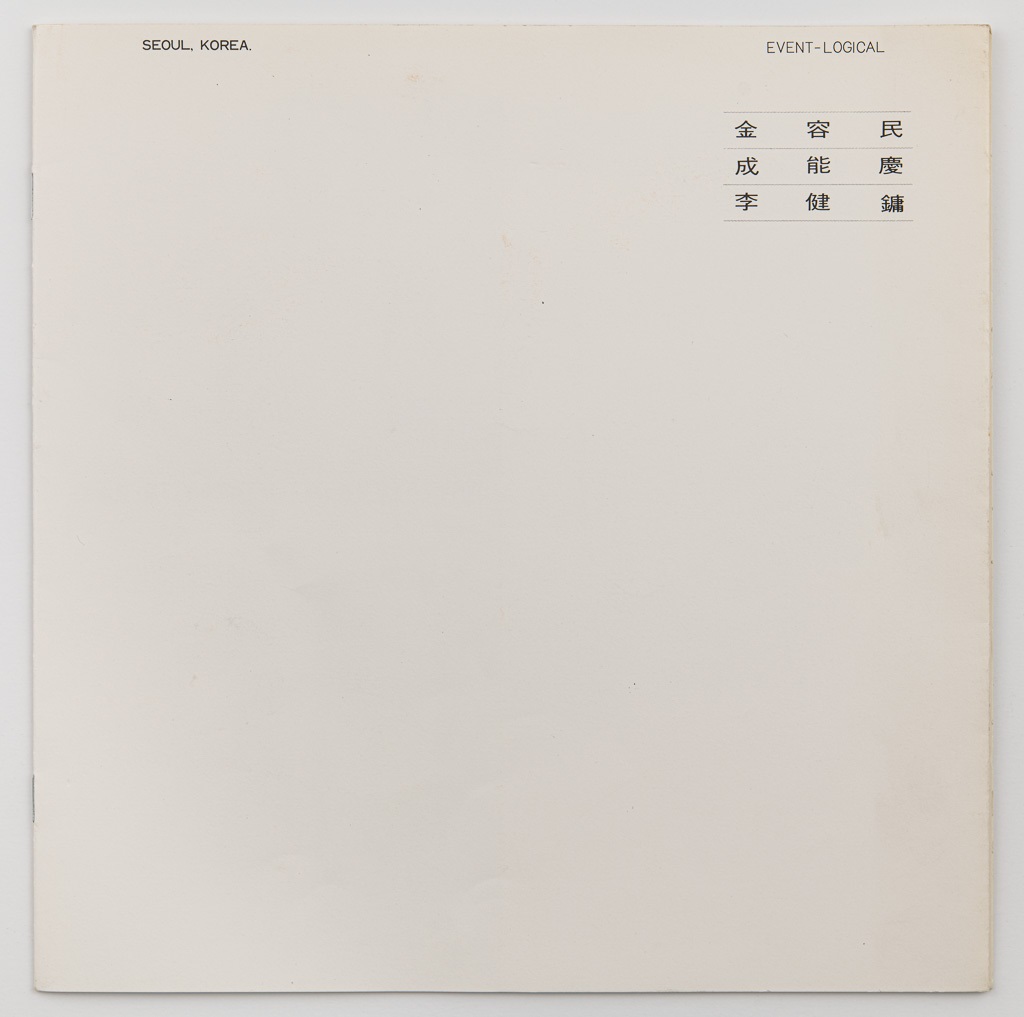
Event-Logical, Brochure, 1976, MMCA Art Research Center Collection, Gift of Lee Kun-Yong
Event-Logical
* Source: MMCA
Related
-
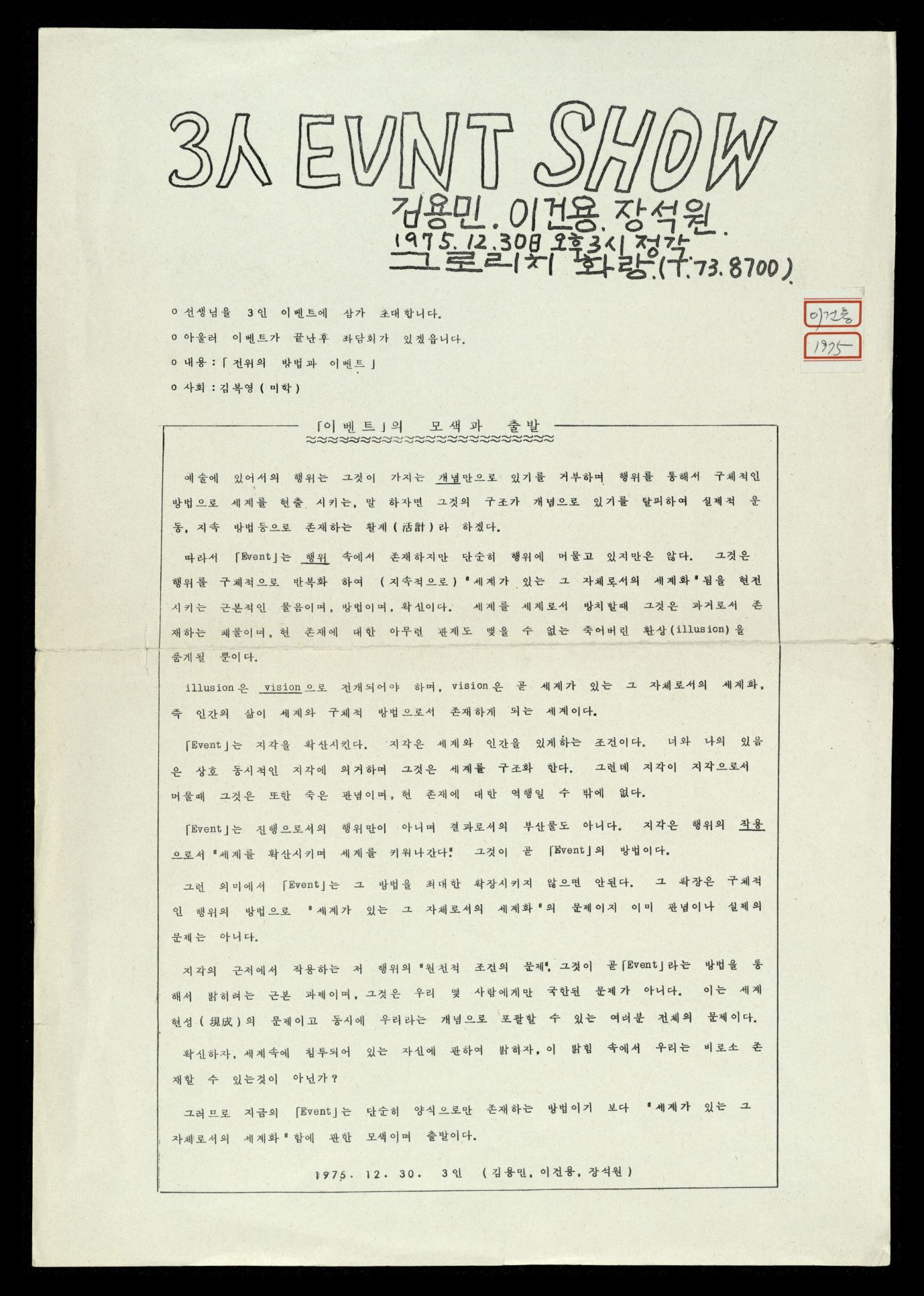
Three-Person Event Show
The Three-Person Event Show was a performance art exhibition held on December 30, 1975 at the Growrich Gallery in Seoul by Kim Yongmin, Lee Kunyong, and Jang Seokwon, who were members of the avant-garde art collective Space and Time Group (ST) from the 1970s. Under the leadership of Lee Kunyong, ST held its first exhibition attended by the theorist Kim Bokyoung and artists Kim Munja, Park Wonjun, Yeo Un, Han Jeongmun, and Shin Sunghy in 1971. Later, ST organized a total of seven group exhibitions until 1980, which were joined by other artists including Sung Neungkyung, Kim Yongmin, Nam Sanggyun, Song Jeonggi, Jang Seokwon, and Yun Jinseop. Throughout the 1970s, members of ST held several seminars and discussions, published a series of research bulletins, and produced a steady stream of over 100 performance art works. Lee Kunyong, who led the activities of ST, named his and his colleagues’ performance art an “event” to differentiate it from happenings from the late 1960s. He first presented the events Indoor Measurement and Equal Area at the ’75 Today’s Method Exhibition held at Baekrok Gallery in Seoul on April 19, 1975. In the Three-Person Event Show held in the same year, Kim Yongmin presented the events Marking off and Painting, Lee Kunyong, Walking and Eating Snacks, and Jang Seokwon, Laughter and Clock. Their events had characteristics of conceptual art that explored the concept of the everyday through the simple performance of everyday acts. The following year, on April 4, 1976, Sung Neungkyung joined these three artists to hold the Three-Person Event Show at Seoul Gallery in Seoul. In this event exhibition, Lee Kunyong presented Rubber Band and String and Logic of Place, Kim Yongmin, Mop and Footprints, Sung Neungkyung, Reading Newspaper and Counting Money, and Jang Seokwon, Matches.
-
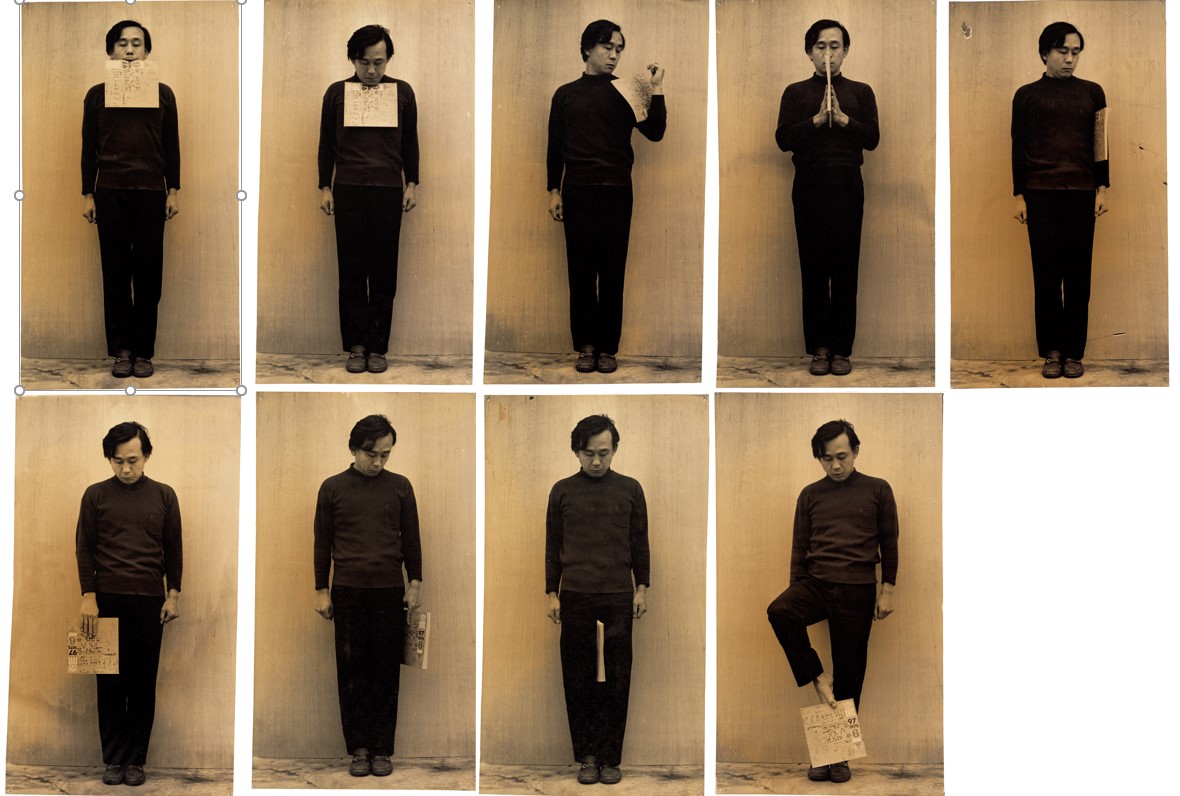
Performance Art
Performance Art refers to art that uses the human body and expressive body movements as an artistic medium. Since its first appearance in 1967, South Korean performance art has been called various terms such as “happening,” “event,” “performance art,” and “performance.” These various terms have resulted from performance art, a foreign art form, being redefined several times in South Korea in accordance with the conditions of a particular era. Therefore, each term implies the Korean peculiarity of a certain period. In particular, “haengyu misul (performance art)” was interpreted as a major experimental art trend in South Korea until the mid-1980s. In the late 1980s, as collaborative activities with other art genres accelerated, the term “haengyu yesul” or “performance” was actively used and replaced the previous term, “haengyu misul.”
-
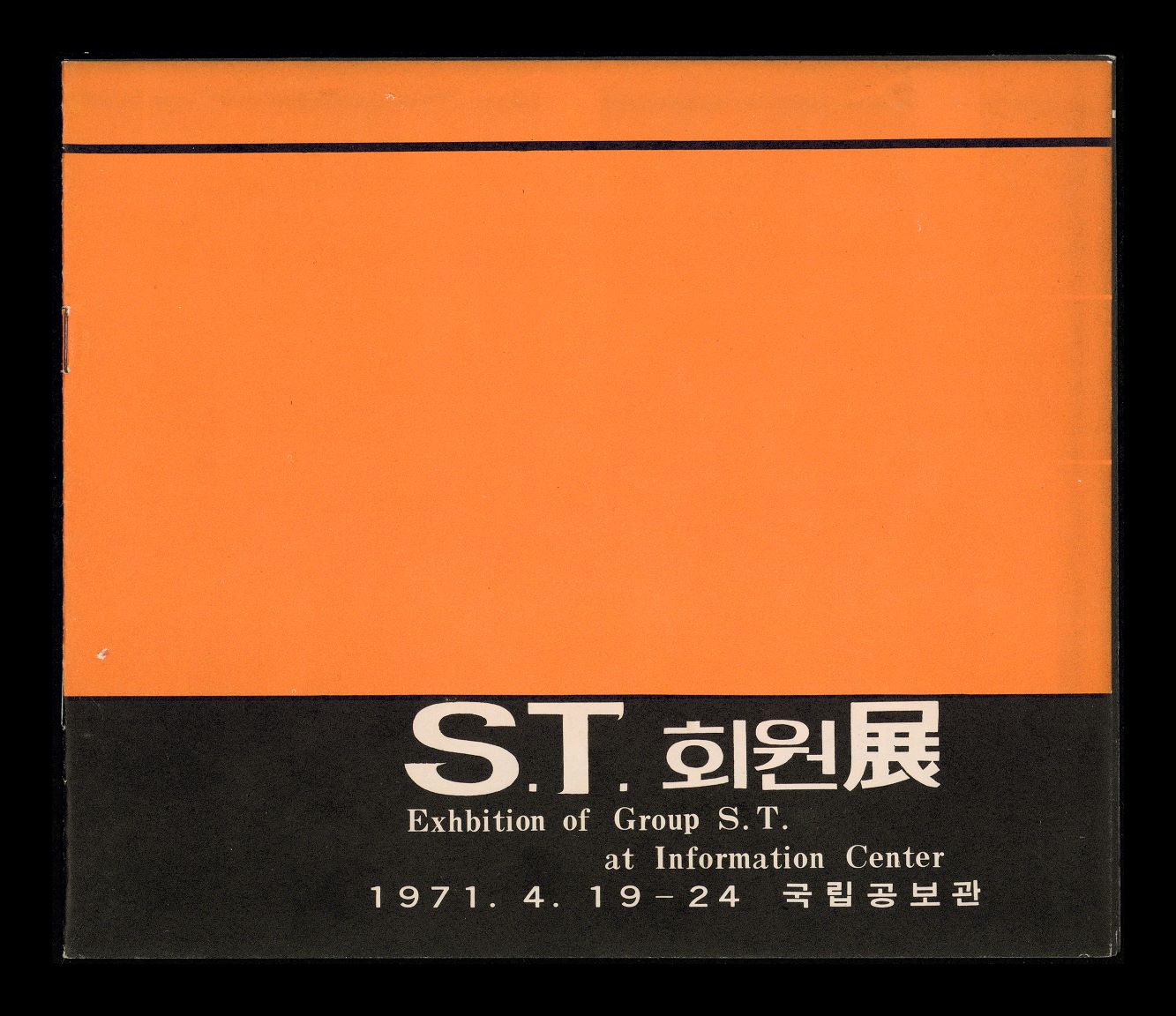
Space and Time Group (ST)
An avant-garde art group that produced three-dimensional work and event. The group was active from 1971 to 1981. The name ST is an acronym for 'Space and Time.' The group not only held exhibitions, it also held research and discussion seminars on texts concerning conceptual art as well as peer critiques.
Find More
-

Department of Art at Hongik University
Established in 1949, the Department of Art at Hongik University consists of one art theory department and eleven practice-based departments, including painting, Oriental painting, printmaking, sculpture, woodworking and furniture design, metal art and design, ceramics and glass, textile art and fashion design, visual communication design, and industrial design. In 1955, it moved from Jongro-gu, Seoul to the current location in Sangsu-dong, Mapo-gu, Seoul. The history of the College of Fine Arts can be largely divided into the period of the Department of Fine Arts from 1949 through 1953, the period of the School of Fine Arts from 1954 through 1971, and the period of the College of Fine Arts from 1972 until now. In March 1953, the Department of Fine Arts produced the first six graduates, and in the following year the School of Fine Arts with three departments was established. In December 1971, it was upgraded to a college, which exists up to the present. Several exhibitions organized by its graduates are notable, including the Four Artists Exhibition held in 1956 as the first anti-National Art Exhibition (Daehanminguk misul jeollamhoe or Gukjeon) by the third and fourth classes of graduates and the Union Exhibition of Korean Young Artists held in 1967 by graduates from the 1960s as an effort to realize experimental art.
-
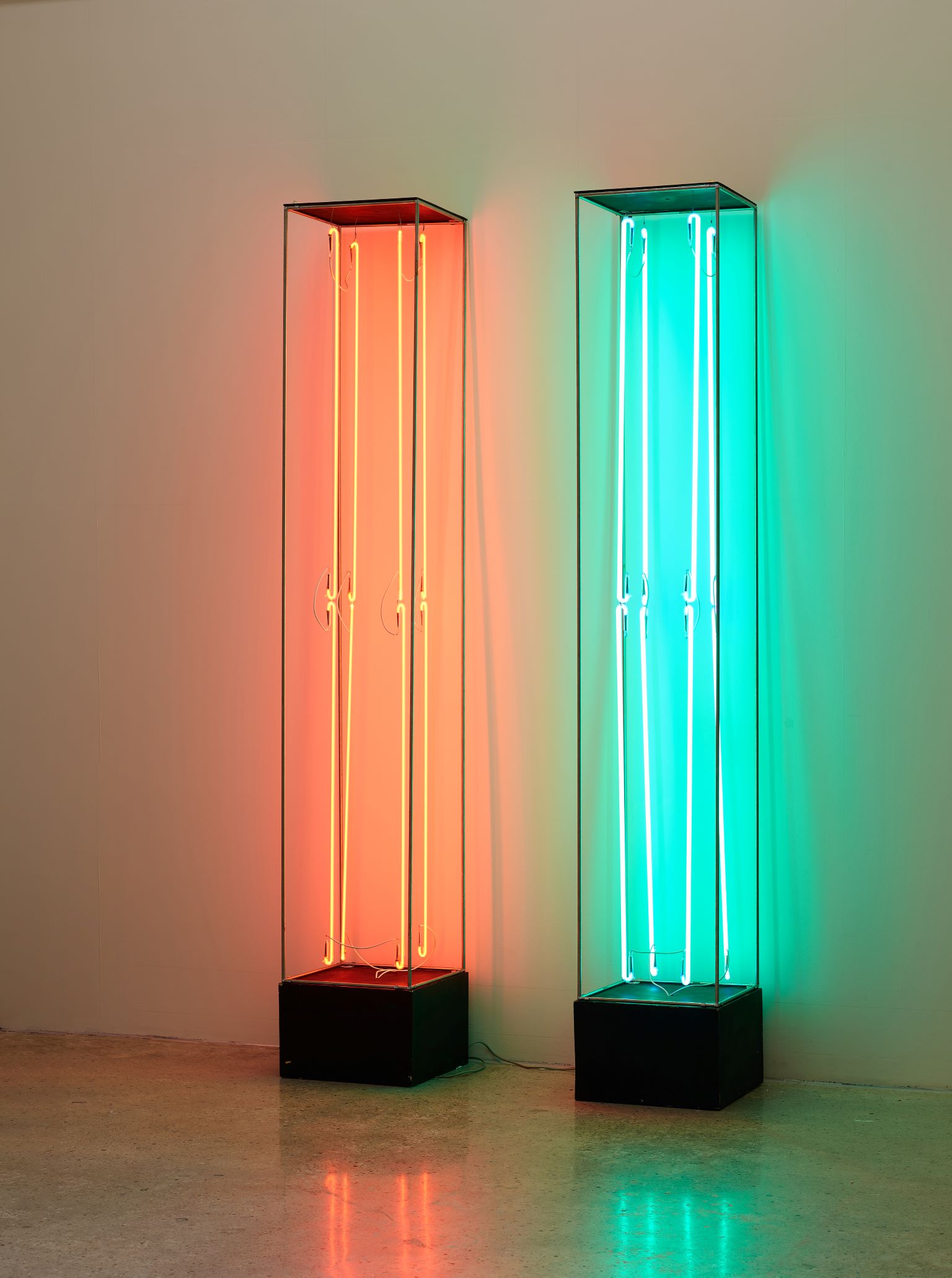
Experimental art
A genre of Korean art characterized by non-two-dimensional work such as sculpture, environmental installation and performance that emerged in the late 1960s and continued over the course of the 1970s. Art historian Kim Mikyung has analyzed the movement in the context of the political and social phenomena of the time and first coined the term experimental art to describe such work.






